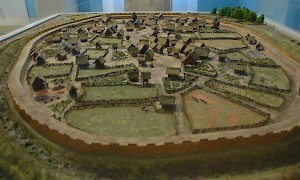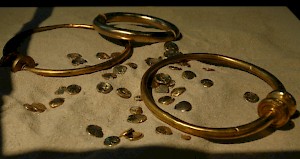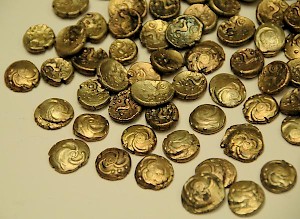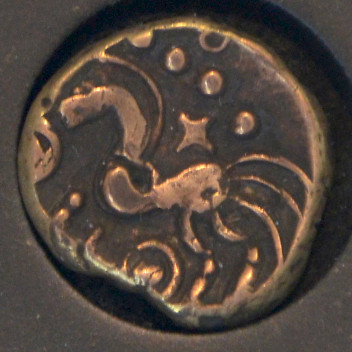Eburones
Q323500Eburones: ancient tribe, probably living in the area of Tongeren, Maastricht, and Aix-la-Chapelle. They were massacred by Julius Caesar.

In 57 BCE, Julius Caesar conquered the valley of the Upper- and Middle- Meuse, which, he said, was inhabited by Belgian tribes. Among the members of the Belgic confederation were the Eburones. In his campaign notes, the Roman general mentions them together with three other tribes, adding that they were called Germanic.note This may indeed mean that they were of Germanic descent, but the four Eburonian names we know are perfectly comprehensible in Celtic (Eburones is related to the word for yew; Aduatuca means "place of the soothsayer"; Ambiorix means "ruler-king"; and Catuvolcus means "hero").
Caesar explains that the heartland of the Eburones was between the Meuse and Rhine,note which probably is more or less identical to the Belgian and Dutch provinces called Limburg, and the western part of Nordrhein-Westphalen. In any case, it was north of the Ardennes. South of these old mountains lived the Treverans, of whom the Eburones were a client-tribe, which was protected by the mightier tribe.note

Caesar tells his most important story about the Eburones in Gallic War 5.24-37. In the winter of 54/53 BCE, the Fourteenth Legion had its winter quarters on a place called Aduatuca or Atuatuca, when the Eburones attacked the Romans. Its commanders, Sabinus and Cotta, trusted the Eburonian king Ambiorix, who appeared to be trustworthy, even when he could not control his men. However, when the legionaries left their camp and started to march in the direction indicated by the Eburonian leader, they were unexpectedly attacked. After returning to Atuatuca, the Roman soldiers committed suicide.
This story is problematic. In the first place, we do not know where it happened. It is tempting to identify the Atuatuca of the Eburones with the later Roman city with the same name, modern Tongeren. However, there are no Roman finds that confirm the presence of the legion: it seems that the Roman city of Atuatuca was built on virgin soil. The objection that "absence of evidence is no evidence of absence" does not apply, because Tongeren has been investigated on many places.
The second problem is that the Eburones were a very small tribe. Caesar mentions them as being able to raise 40,000 soldiers together with three other tribes. Even if we assume that the Eburones were the largest of these four, it is impossible that they could raise sufficient warriors to annihilate a well-trained, heavily-armed legion.

Perhaps we will have more certainty about the campaign once Atuatuca has been identified. It must have been close to modern Tongeren, because the name was transferred from the camp of the Fourteenth to the later city. Two treasures from the mid-first century, found at Heers (2000) and Maastricht-Amby (2008), also suggest military activity in the neighborhood. A possible location is Caestert, where a Late Iron Age hillfort (oppidum) has been identified; its excavator, Heli Roosens, has mentioned mass cremations, but has never published them, and it is not known where he has found it.
Caesar's revenge was terrible. In the spring of 53, he invited everyone who wanted to join him, to help massacre the Eburones. According to Livy, Ambiorix managed to escapenote and his fellow-leader Catuvolcus committed suicide. Nothing more was heard of the Eburones. About three hundred days after they had defeated a Roman legion, they no longer existed as a political entity. Later, a tribe called the Tungri was living in the area.

However, it remains to be seen whether the Eburones were all wiped out, as Caesar claims. The ancient armies could hardly exterminate complete nations. On the other hand, from pollen findings in the area of Jülich (north of Aix-la-Chapelle), it appears that the number of pastures and cornfields fell from the mid-first century BCE and that forests were again growing there. On this land at least, there were no farmers any more. However, it is not clear if this is representative of the whole country of the Eburones, so this remains an open question.
Literature
- Toorians, L., "Aduatuca, 'place of the prophet'. The names of the Eburones as representatives of a Celtic language, with an excursus on Tungri", in: Creemers, G. (ed.), Archaeological contributions to materials and immateriality, Atvatvca 4 (2013) 108-121.